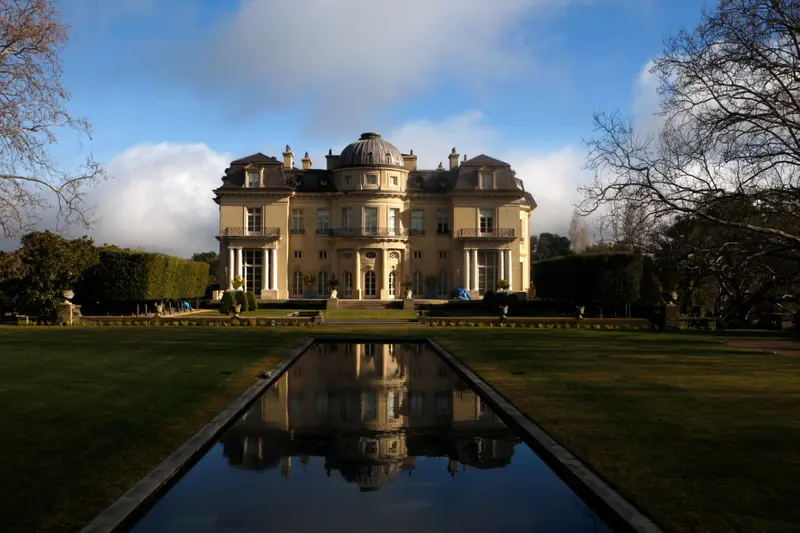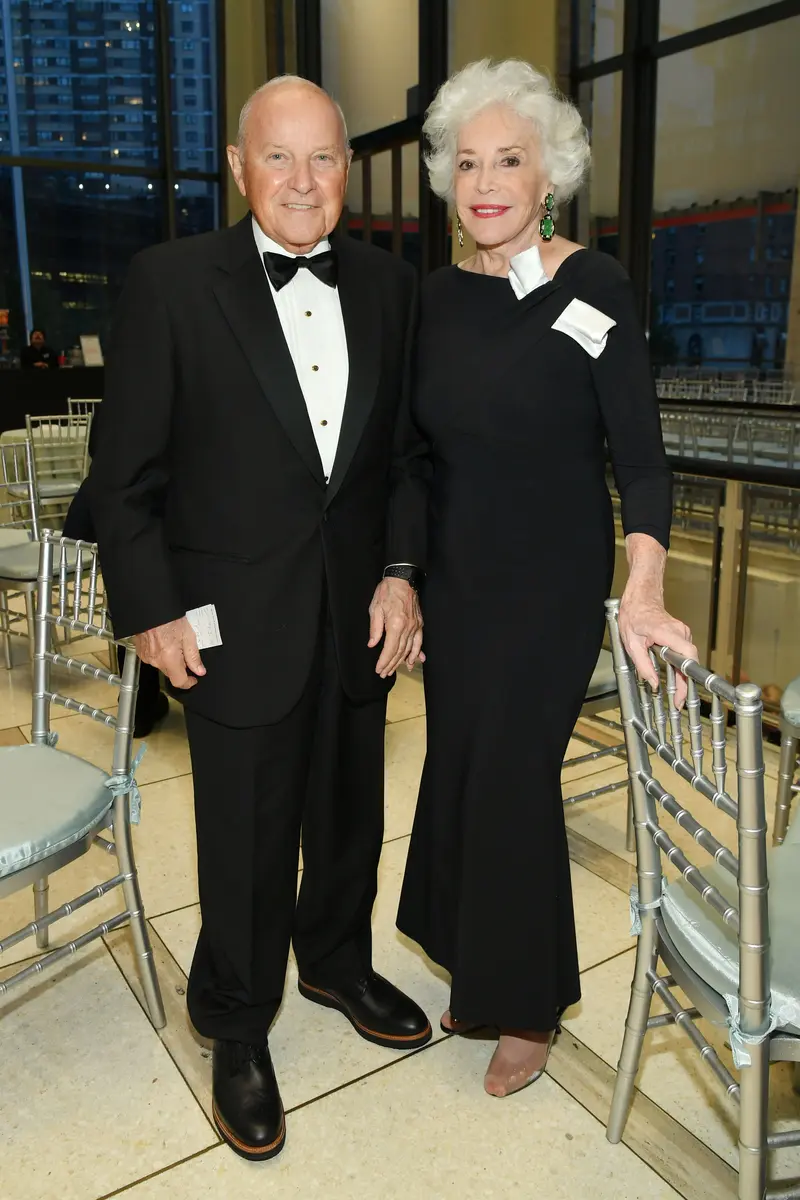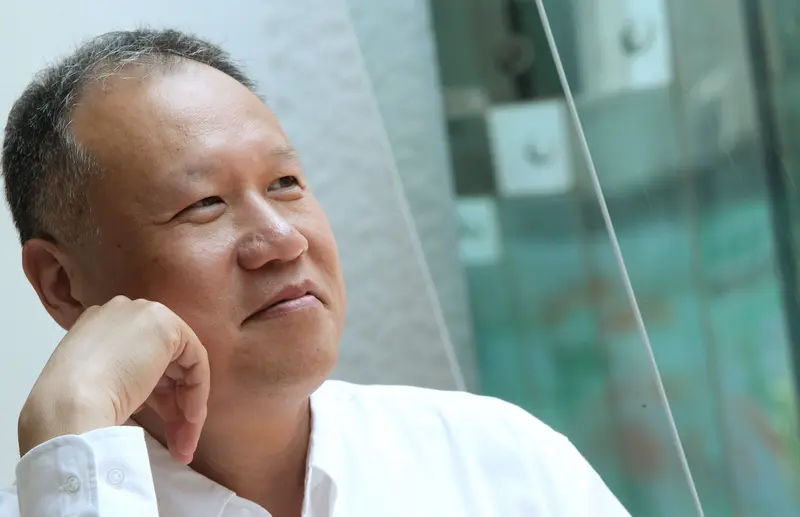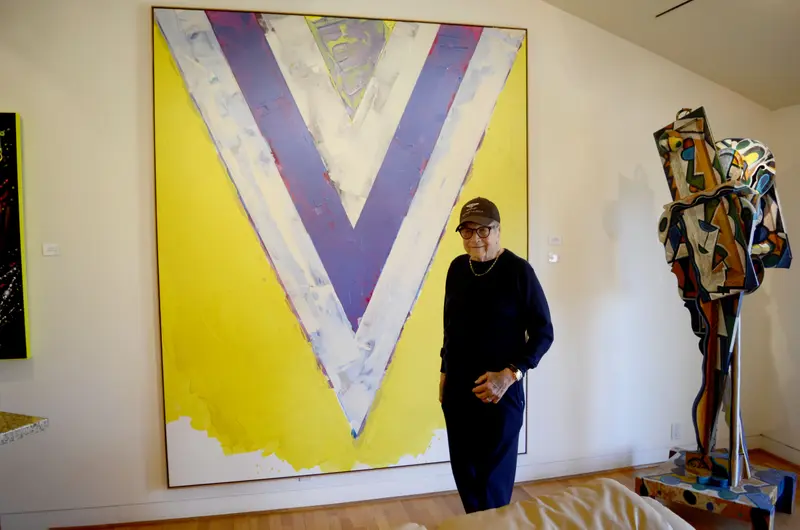Once a week, a little past noon on Wednesdays, a line of cars forms outside the wrought-iron gates of the Carolands mansion, 20 miles south of downtown San Francisco. From the entrance, you can see the southeast facade of the 98-room Beaux Arts chateau, which was built a century ago by an heiress to the Pullman railroad-car fortune. Not visible from that vantage point is the stately reflecting pool, or the gardens, whose original designer took inspiration from Versailles.
I was sitting just outside this splendor, idling in my rented Toyota Corolla, on a clear day last winter. Like the other people in the line of cars, I was about to enjoy a rare treat. Carolands is an architectural landmark, but it’s open only two hours a week. Would-be visitors apply a month in advance, hoping to win a lottery for tickets. Like most lotteries, this one has long odds. I had applied unsuccessfully for the three tours scheduled for February. Finally, I resorted to my journalist’s privilege: I emailed and called the director of the foundation that owns the estate, explaining that I was a reporter planning to be in the area for a few days. Could she help? Eventually, she called back and offered me a place on a tour.
It wasn’t supposed to be this difficult. When billionaire Charles Johnson sought a tax break in 2013 for donating his mansion to his private foundation, the organization assured the Internal Revenue Service and state officials that the public would be welcome. “The Foundation will fulfill its charitable and educational purpose by opening the Carolands Estate to the public,” it stated in its application for tax-exempt status, which included a pamphlet for a self-guided tour. The foundation later told a California tax regulator that the estate was open to the public every weekday from 9-5.

There was a lot of money at stake. Johnson, a Republican megadonor and part owner of the San Francisco Giants, had gotten an appraisal valuing the property at $130 million, a price higher than any publicly reported home sale in the U.S. up to that time, and five times the $26 million he and his wife, Ann, had reportedly paid 14 years earlier to buy and restore what then was a dilapidated property.
The plan worked. The IRS granted the foundation tax-exempt status. That allowed the Johnsons to collect more than $38 million in tax savings from the estate over five years, confidential tax records show.
But the Johnsons never opened Carolands to the public for 40 hours a week. Instead, the foundation bestows tickets on a few dozen lottery winners, who receive two-hour tours, led by docents, most Wednesdays at 1 p.m. Self-guided tours, like the ones described in the attachments to Johnson’s IRS application, are not offered. “It sounds like a vanity project with little to no public benefit,” said Roger Colinvaux, a professor of law at The Catholic University of America who specializes in the tax law of nonprofit organizations. (Experts also questioned Carolands’ $130 million valuation — which turbocharged the Johnsons’ deduction — while acknowledging that as long as it’s based on a qualified appraisal, which it was, the IRS is unlikely to challenge the size of the deduction.)

For the ultrawealthy, donating valuables like artwork, real estate and stocks to their own charitable foundation is an alluring way to cut their tax bills. In exchange for generous tax breaks, they are supposed to use the assets to serve the public: Art might be put on display where people can see it, or stock sold to fund programs to fight child poverty. Across the U.S., such foundations hold over $1 trillion in assets.
But a ProPublica investigation reveals that some foundation donors have obtained millions of dollars in tax deductions without holding up their end of the bargain, and sometimes they personally benefit from donations that are supposed to be a boon to the public. A tech billionaire used his charitable foundation to buy his girlfriend’s house, then stayed there with her while he was going through a divorce. A real estate mogul keeps his nonprofit art museum in his guesthouse and told ProPublica that he hadn’t shown it to a member of the public since before the pandemic. And a venture capitalist couple’s foundation bought the multimillion dollar house next to their own without ever opening the property to the public.
Unlike public charities, private foundations are typically funded by a single donor or family, who retain a high degree of control long after receiving a tax break for ostensibly giving their possessions away. “This is the classic problem with private foundations: Substantial contributors can see it as their thing,” said Philip Hackney, a law professor at the University of Pittsburgh and former IRS attorney. “There’s generally not a coalition who cares, other than the family, so there’s nothing to ensure that the assets are used for a particular purpose,” he added.
In theory, it’s illegal to fail to provide a public benefit or to make personal use of foundation assets. But the rules defining what’s in the public interest are vague, according to tax experts; for example, Congress has never defined how many hours a museum would need to be open to be considered accessible to the public. And with the IRS depleted by a decade of budget cuts, enforcement has been lax. The agency examines an average of 225 returns among the 100,000 filed by private foundations each year, according to agency statistics.
Peter Kanter, an attorney representing the Carolands Foundation, told ProPublica that “we believe pretty strongly that the foundation is serving its purpose of preserving and showcasing this historic and unique property to the public.” He said that tours are limited because the foundation has only a few volunteer docents who are knowledgeable about the home, and because significantly higher traffic might compromise the foundation’s ability to preserve its unique architecture. Kanter also emphasized the public value of free charitable events that the foundation occasionally hosts for other nonprofits at the estate.
At the Carolands, guides didn’t emphasize benefits to the public — just the opposite. A docent told my tour group that the foundation prefers lotteries to holding regular hours and charging admission. This, he explained, preserves the home for those who “really want to see it.” Indeed, exclusivity and rarefied taste were a theme of the tour, which included tales of the exacting specifications of Harriett Carolan, the Pullman heiress, a Francophile who imported an entire salon that had been built in France on the eve of the revolution. (For their parts, when Ann and Charles Johnson unveiled the restored chateau at a costume party, they dressed as Marie Antoinette and Louis XVI.)
Before the tour, one of the docents asked how many of us had ever visited a nearby historical mansion, called the Filoli estate, built in the same era as the Carolands. Many hands shot up among the tour group. When he asked if any of us had visited the Carolands before, no one raised their hand.
Curious, I popped by Filoli the following afternoon. It is run by a public charity and is open from 10 to 5 every day. In contrast to the Carolands, I was able to simply show up, pay admission and enter. Inside, I encountered dozens of employees who provided helpful information and watched over the manor and its gardens while more than a hundred visitors wandered about. Photography, which had been prohibited inside the Carolands, was permitted at Filoli.
Congress and the IRS have never clearly defined what qualifies as a “public benefit.” By contrast, identifying a private benefit is much simpler. Decades ago Congress prohibited what it called self-dealing by insiders. The laws are designed to keep them from using or profiting from foundation assets. Among other things, the rules bar leases between a donor and their foundation. Violations can incur a penalty known as an excise tax.
At least one billionaire appears to have run afoul of those real estate rules, according to tax experts. Since 2009, Ken Xie, CEO of a cybersecurity company called Fortinet, has gotten more than $30 million in income tax deductions for contributing shares of his business to a private foundation that he started to support various charitable causes.
In 2017, Xie’s foundation (whose sole officers are Xie and his brother) spent $3 million to purchase a home in Cupertino, California, from his new girlfriend while he was going through an acrimonious divorce. After the foundation purchased the home, Xie allowed his girlfriend to continue living there; he also stayed there for a time. These details emerged in a lawsuit filed by the now-ex-girlfriend, who was permitted to file the suit anonymously, in county court. (The suit is ongoing.) According to leases filed in the case, the foundation charged her rent, but Xie agreed to pay half of it.
Xie himself appears to have been aware that he risked violating the rules. In a December 2019 text message to his girlfriend that was included in the court case, Xie wrote, “I covered some house part but also try not creat issue related to foundation and tax, believe will make some progress next few months by transfer house out of foundation, may need 2 step by first transfer to other entity.” The next month, his foundation transferred the property to an LLC.

In an email to ProPublica, Gordon Finwall, a lawyer for Xie, said the foundation is “fully committed to complying with all applicable rules and regulations.” He acknowledged that Xie “spent some time at the Cupertino property in 2017 and 2018,” but asserted that the sublease was never in effect and Xie never paid his ex-girlfriend any rent.
Two days after I emailed Finwall in April inquiring about the Xie Foundation’s purchase of the house, the foundation filed records with the California attorney general’s office, stating that it had “discovered a self-dealing event” and including a federal tax return with the word “amended” handwritten at the top. In his email to ProPublica, Finwall said that, after amending its returns, the foundation “paid some excise taxes related to Mr. Xie’s stay at the property.” Finwall also said that Xie had planned to file the amended returns months earlier but didn’t do so because his accountant mailed the IRS forms to Xie at an outdated address.
Despite the blurriness of many rules relating to foundations, the issue of public access has given rise to controversy in the past. After a New York Times article in 2015 exposed the limited hours of many private museums, the Senate Finance Committee, under then-chairman Orrin Hatch, launched an investigation. Hatch expressed concerns about museums that require advance reservations and maintain limited public hours. He questioned instances where “founding donors continue to play an active role in management and operations of the museum” and “museum buildings are adjacent to the donor’s private residence.”
But no meaningful rule changes followed the investigation. And absent new laws, cracking down on abusive foundations would require the IRS to put scarce resources into an area that many experts said simply isn’t a priority, particularly after the agency’s previous attempt to police abuse by political nonprofits a decade ago caused a conservative firestorm.
The agency doesn’t appear likely to increase oversight any time soon. A recently published budget blueprint outlining IRS priorities for the $80 billion in new funding it received from the Inflation Reduction Act made no mention of increasing audits of private foundations.
“The IRS protects the public interest by applying the tax law with integrity and fairness to all,” the agency wrote in a statement to ProPublica. The statement cited a compliance program that “focuses on high-risk issues” among tax-exempt organizations, and it asserted that the program “deploys the right resources to address noncompliance issues.” The IRS also pointed to a recent tax court case that it won against a foundation that, among other things, kept a collection of African artifacts in a basement with no public access. And an agency spokesperson highlighted a rule stating that foundations can lose their exempt status if they operate in a manner “materially different” than what they claimed they would do in their initial application.
Despite the attention spurred by the Hatch investigation, some foundations seem to have continued undeterred. Consider the Lijin Gouhua Foundation. Collecting Chinese paintings and sharing them with the public was the stated mission of the organization, which was launched by Bay Area venture capitalists J. Sanford “Sandy” Miller and his then-wife, Vinie Zhang Miller, in 2006. Since then, the couple generated $5.6 million worth of income tax write-offs largely from donating shares of tech companies like Twitter and Snapchat to their private foundation.
When the couple cashed in the foundation’s stock to buy a potential museum space for the art in 2017, they opted against a high-traffic location where lots of people could easily access it. Instead, they chose the $3.1 million house adjacent to their own estate in Woodside, an exclusive enclave outside of San Francisco.
“A private museum is usually by appointment only,” Vinie Miller said when asked about the out-of-the-way location. “We wouldn’t hold long showing hours. It’s usually people we have a relationship with.” She said that the main way for the public to access the collection was through loans of artwork the foundation has made to universities, other museums and galleries. (In an email, Sandy Miller wrote: “Please be advised that I am not married to Vinie and that I have no involvement with the Lijin Gouhua Foundation.” Public records show Vinie filed for divorce from him in 2019; Sandy ceased to be listed as president of the foundation on IRS filings that year as well.)
The museum that was purchased with the foundation’s tax-exempt funds never actually opened. Vinie Miller said the plan was “hypothetical” and that the foundation held the home as an investment instead. That’s at odds with the foundation’s publicly available tax returns, which have listed the property as being used for charitable purposes. (Miller did not respond to a follow-up question asking about the discrepancy between her statements and the foundation’s tax returns.) As Colinvaux, the specialist in nonprofits, put it, “If it’s an investment asset, then it’s not a charitable use asset, and they shouldn’t be counting it as such” on their IRS filings.
In one similar instance involving another foundation, the IRS expressed hesitation about the organization’s plans, then backed off. In 2006, San Diego real estate magnate Matthew Strauss sought a $4 million write-off for the guesthouse that held part of his contemporary art collection. An IRS employee wrote that it appeared Strauss and his wife “are using the assets of the Foundation (the guest house gallery) as a facility for housing and displaying a large portion of their personal art collection for their enjoyment and benefit as well as the enjoyment and benefit of invited guests.” The employee wanted to know when actual art would be donated, what kind of access the public would have to the gallery, and how the couple planned to inform people that they could visit, among other things.
The couple’s lawyer assured the IRS representative that she’d gotten the wrong impression. The Strausses would host no personal events there and the public would have access to view the collection “upon request.” The couple anticipated donating “substantially all” of their $50 million collection to the foundation. They couldn’t say when, but the couple planned to make donations “in a fashion that minimizes income taxes.”
As 2006 turned into 2007 with no sign that the IRS would bless its museum tax deduction, the couple sought political help. In January, the head of the IRS’ tax-exempt division received a letter from the office of Sen. Dianne Feinstein (D.-Calif.), inquiring about the delay in approving the application from the couple, who’d given her more than $15,000 over the past few election cycles. That June, their application was approved. (“The senator was not advocating in support of the constituent’s application, but instead requested clarification on the case after nine months of an inability to resolve the case,” a spokesperson for Feinstein said, noting that her office frequently sends such letters on behalf of constituents).
As of 2021, 15 years after the Strausses’ lawyer told the IRS they would donate $50 million in art, the foundation holds $6 million worth. The rest remained in a private trust.
To learn more about Strausses’ gallery, I tried to schedule a visit earlier this year. As with Carolands, I was able to get in, but it took some effort. The foundation’s website doesn’t list an address or hours of operation. A contact form available for visitors to inquire about tours wasn’t working when I tried it repeatedly. I ultimately had to pester employees of Strauss’ real estate company for a couple of weeks before someone responded and asked me to submit a biography for their boss to review. (My bio described me as a reporter with ProPublica, with the first coverage area listed as “tax policy.”)
Soon after I sent in my biography, I received a call from Matthew Strauss himself. After a brief conversation, he declared me “worthy” of the first tour he said he’d given in three years and sent along directions to the museum.
I didn’t see any signs outside the couple’s estate, nicknamed Rancho Del Arte, that indicated a museum could be found anywhere on the premises. From the outside, their guesthouse seemed relatively unassuming, its multimillion-dollar value betrayed only by the horse stables and privacy hedges of the nearby mansions I passed on the way in. A path wide enough for a golf cart wound its way through a grove of palm trees, past oversized sculptures and a private tennis court, to the Strausses’ own sprawling abode a hundred yards or so away.
The inside was more remarkable. The Strausses remodeled the building in the early 2000s with custom fixtures to illuminate works from their collection of contemporary art. Sounds and music from dueling audiovisual works on the main floor flooded the space, while the click-clack of a never-ending ping pong game echoed up from a conceptual piece in the basement. These noisier forms shared space with paintings on canvas and metal and with textured mixed-media compositions.
Dressed in sweats and sporting a Bentley baseball cap, Strauss personally led my solo tour, meandering from one prized possession to the next. He exhibited an uncanny memory for how he obtained each piece, likening the acquisition process to the thrill of a hunt. (“Once you get the fox, it’s not as much fun.”) He spoke of one painting as “my poor man’s ‘Mona Lisa’” and another as “my victory piece.”

Halfway through my visit, we stopped to take in the view from the museum’s balcony. “At this point, you can see why I had to buy this property,” he told me, explaining that he’d bought the guesthouse from his neighbor in the late 1990s to keep anyone else from moving in. “Anybody here, they would have knocked it down, and you know, really ruined our privacy.”
As the tour continued from room to room, Strauss leaned into his persona as a friendly professor. He asked probing questions about each modern piece before delving into centuries of art history. “I really show [people] how to look at art, I don’t just tell them ‘This is So-and-So,’” he said, recalling the tours he used to give to college students.
Before the pandemic, the foundation would conduct a dozen or two dozen tours each year, drawing a total of about 400 visitors to the gallery, according to the foundation’s website. But even as California’s other museums welcomed guests back in the spring of 2021, the foundation remained dormant.
Strauss acknowledges the tax benefits of having the foundation and maintained that he had made efforts to make his art available to the public. “I feel like I have an obligation to show it, but it’s got to be under favorable conditions,” he said. He’d told me he’d like to get tours going again, but only when schools and universities stop requiring masks and start treating COVID-19 “like normal.”
Strauss said he gets requests from individuals to see the collection “all the time.” But, he added, “to show one or two, it’s not worthy. It’ll wear me out.” Letting people come on their own was out of the question (they might damage the art), as was having regular public hours (it’s a zoning issue, he said, and the neighbors would never go for it). Strauss declined to respond to a list of follow-up questions that I sent after the tour.
A couple months from turning 90, Strauss was more focused on the big picture. Sooner or later, he said, he plans to give away most of the collection, which he estimates to be worth hundreds of millions of dollars. Most of his personal collection will go to the Museum of Contemporary Art San Diego, while the foundation’s assets will go to the University of California, San Diego under a deal that is in the process of being finalized.
As we made our way through the gallery, Strauss paused before a reproduction of a Life magazine cover featuring the 1964 World’s Fair in New York. Did anything catch my eye about it, he asked.
I stared for a moment.
“Why don’t you knock on it,” he suggested. “Maybe that’ll help you.”
Strauss sensed my hesitation to touch the art — he wanted me to see it was made of metal — and tried to put me at ease.
“You’re not supposed to,” he chuckled. “But this is my museum!”
For this story, ProPublica reviewed a nationwide database of parcels provided by the real estate data analytics firm Regrid to find homes owned by private foundations.
Paul Kiel and Andrea Suozzo contributed data analysis.












